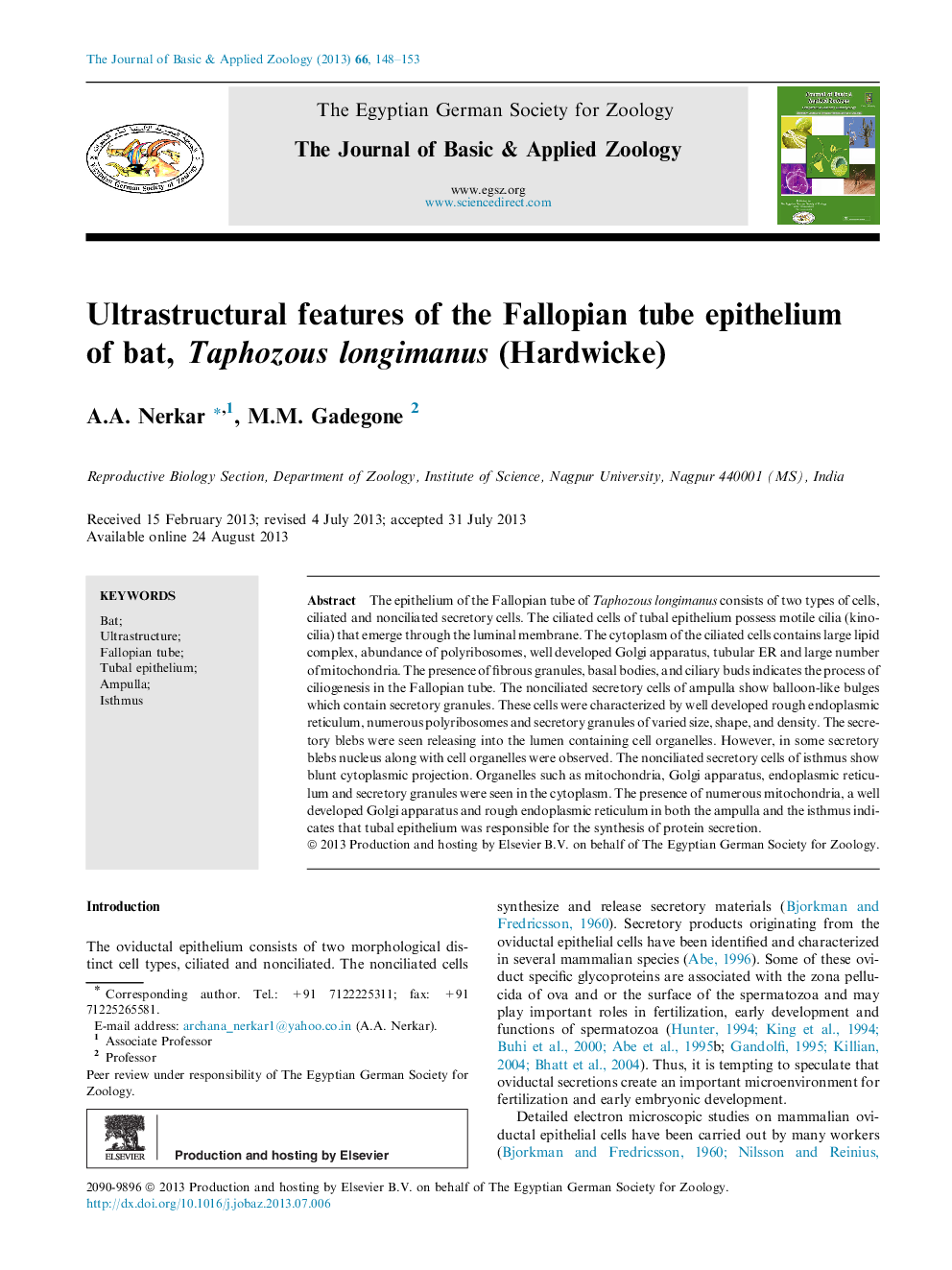| Article ID | Journal | Published Year | Pages | File Type |
|---|---|---|---|---|
| 4493479 | The Journal of Basic & Applied Zoology | 2013 | 6 Pages |
The epithelium of the Fallopian tube of Taphozous longimanus consists of two types of cells, ciliated and nonciliated secretory cells. The ciliated cells of tubal epithelium possess motile cilia (kinocilia) that emerge through the luminal membrane. The cytoplasm of the ciliated cells contains large lipid complex, abundance of polyribosomes, well developed Golgi apparatus, tubular ER and large number of mitochondria. The presence of fibrous granules, basal bodies, and ciliary buds indicates the process of ciliogenesis in the Fallopian tube. The nonciliated secretory cells of ampulla show balloon-like bulges which contain secretory granules. These cells were characterized by well developed rough endoplasmic reticulum, numerous polyribosomes and secretory granules of varied size, shape, and density. The secretory blebs were seen releasing into the lumen containing cell organelles. However, in some secretory blebs nucleus along with cell organelles were observed. The nonciliated secretory cells of isthmus show blunt cytoplasmic projection. Organelles such as mitochondria, Golgi apparatus, endoplasmic reticulum and secretory granules were seen in the cytoplasm. The presence of numerous mitochondria, a well developed Golgi apparatus and rough endoplasmic reticulum in both the ampulla and the isthmus indicates that tubal epithelium was responsible for the synthesis of protein secretion.
